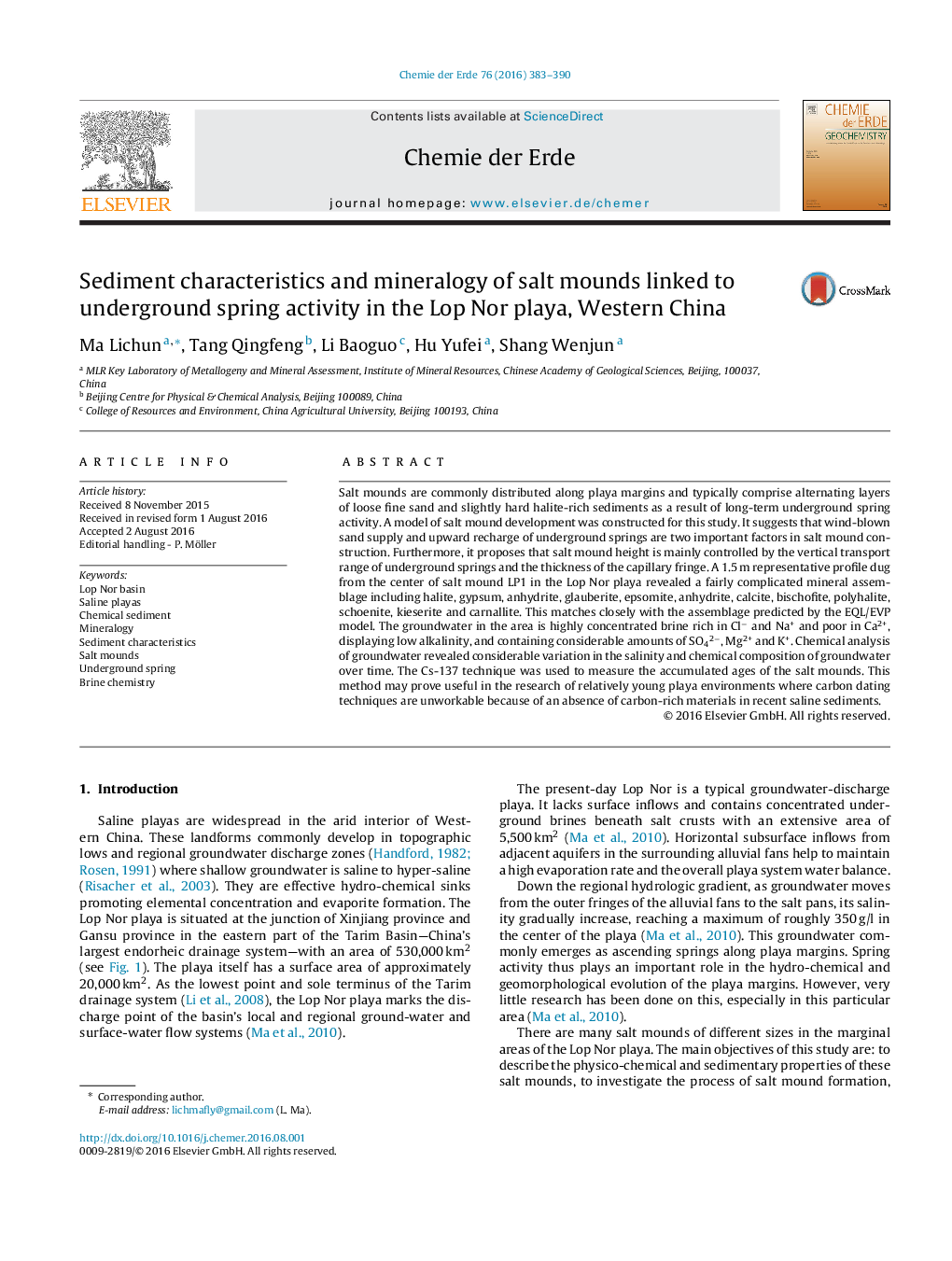| Article ID | Journal | Published Year | Pages | File Type |
|---|---|---|---|---|
| 5745692 | Chemie der Erde - Geochemistry | 2016 | 8 Pages |
Salt mounds are commonly distributed along playa margins and typically comprise alternating layers of loose fine sand and slightly hard halite-rich sediments as a result of long-term underground spring activity. A model of salt mound development was constructed for this study. It suggests that wind-blown sand supply and upward recharge of underground springs are two important factors in salt mound construction. Furthermore, it proposes that salt mound height is mainly controlled by the vertical transport range of underground springs and the thickness of the capillary fringe. A 1.5Â m representative profile dug from the center of salt mound LP1 in the Lop Nor playa revealed a fairly complicated mineral assemblage including halite, gypsum, anhydrite, glauberite, epsomite, anhydrite, calcite, bischofite, polyhalite, schoenite, kieserite and carnallite. This matches closely with the assemblage predicted by the EQL/EVP model. The groundwater in the area is highly concentrated brine rich in Clâ and Na+ and poor in Ca2+, displaying low alkalinity, and containing considerable amounts of SO42â, Mg2+ and K+. Chemical analysis of groundwater revealed considerable variation in the salinity and chemical composition of groundwater over time. The Cs-137 technique was used to measure the accumulated ages of the salt mounds. This method may prove useful in the research of relatively young playa environments where carbon dating techniques are unworkable because of an absence of carbon-rich materials in recent saline sediments.
